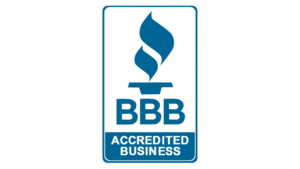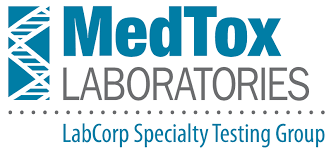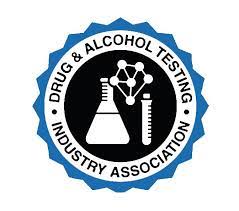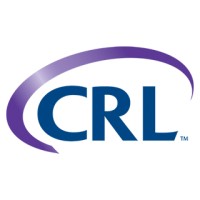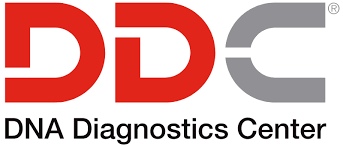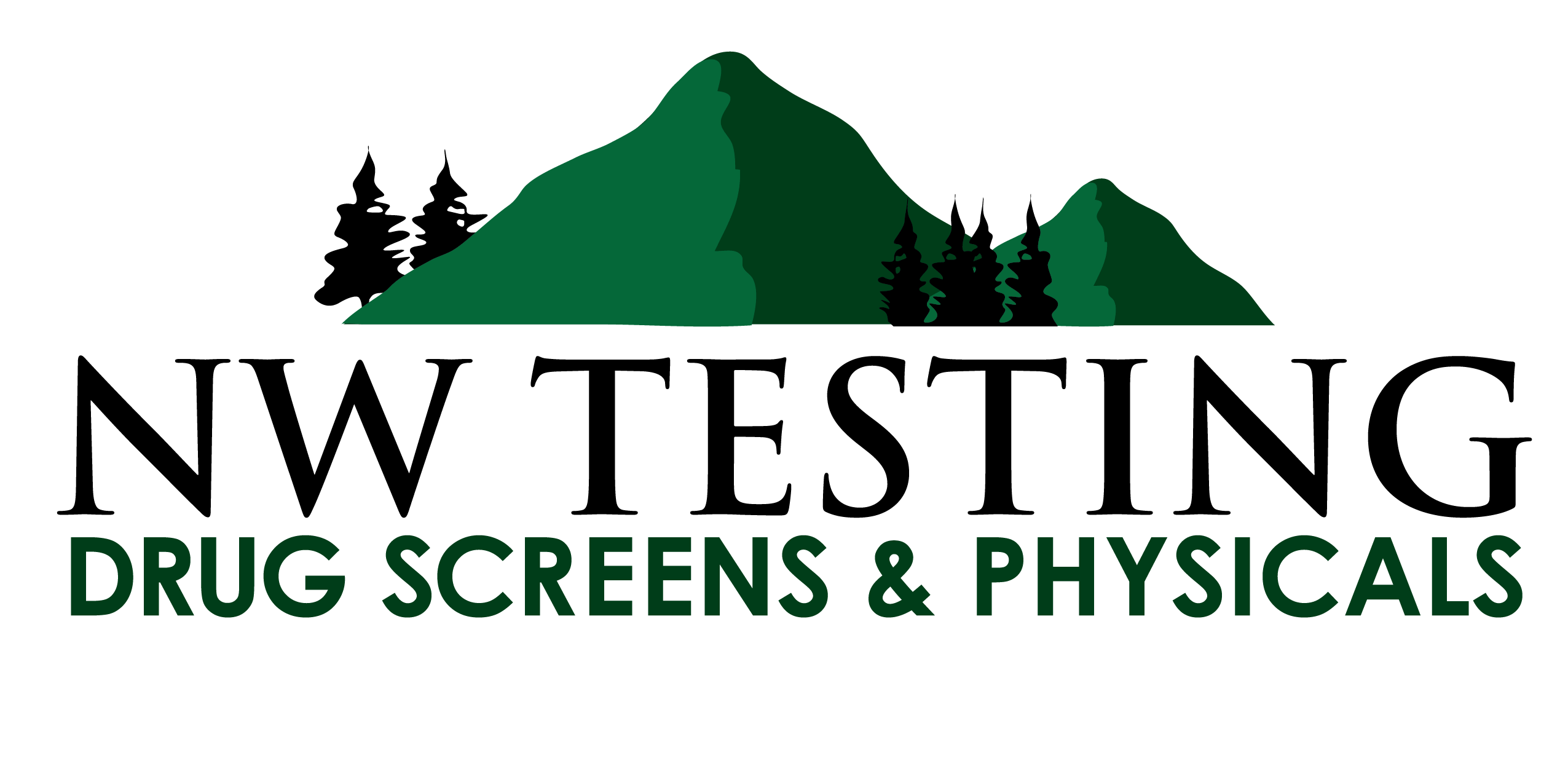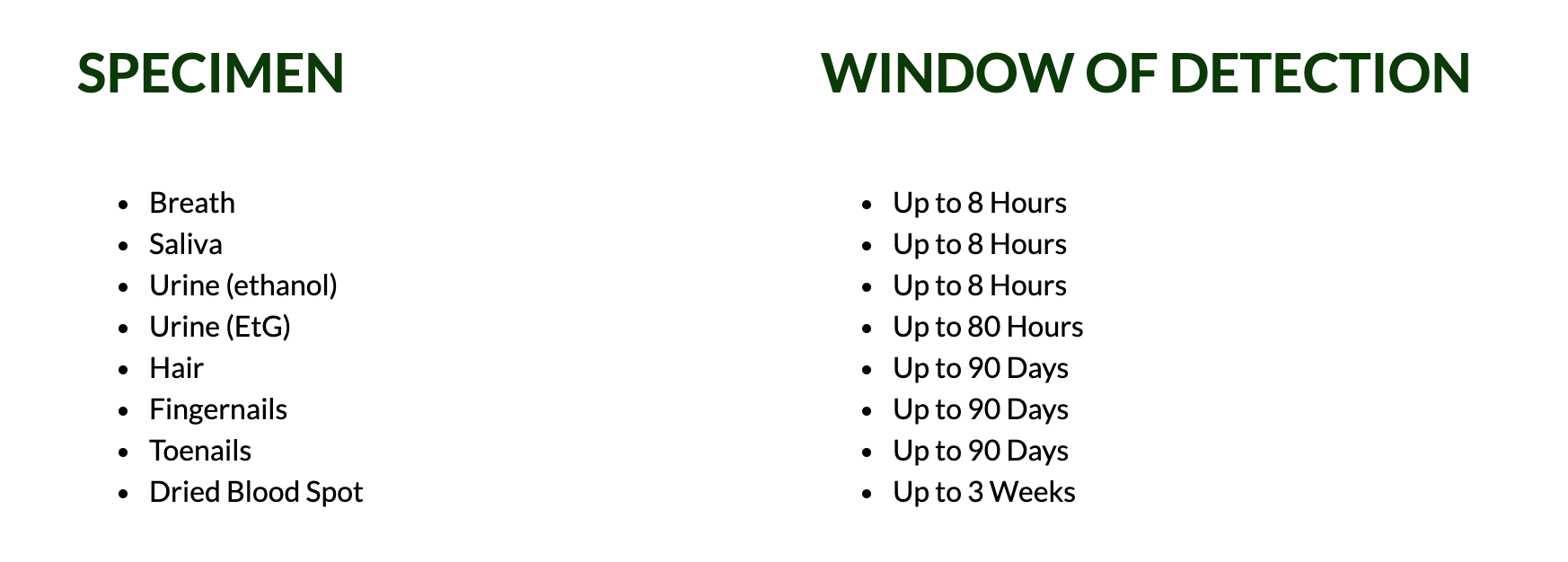Alcohol Testing - Identify Use with Breath, Urine, Hair, and Nail Tests
Alcohol (ethanol) can be detected in breath, urine, hair, nails and blood. The type of specimen used will determine how far back it can be detected. For federally-mandated testing (DOT), breath testing is the only specimen allowed. However, in non-DOT testing other specimens can be used to detect ethanol including saliva and urine. In cases where a longer window of detection is needed alcohol biomarkers (PEth and EtG) can be detected in urine, hair, nails and blood.


Breath Testing (Ethanol)
Following ingestion of alcohol, ethanol molecules are equally dispersed throughout the water contained in the body and then into the blood. As blood cells exchange oxygen in the lungs, these molecules are then expressed in the breath during exhalation. Breath testing devices are able to detect this expired ethanol and provide results that correlate with blood alcohol levels. NW Testing utilizes Evidential Breath Testing (EBT) devices that are approved for federally-mandated (DOT) testing as well as non-DOT and legal testing purposes. The window of detection for a breath test is 8 to 10 hours from time of ingestion.
Pros: Immediate results are legally-admissible, inexpensive.
Cons: Limited window of detection, due to higher cost of maintenance not all testing facilities have them.
Urine Testing (Ethanol)
Following ingestion of alcohol, ethanol molecules are equally dispersed throughout the water contained in the body and are absorbed into the blood from the digestive system before passing into the urine. Ethanol can be detected in the urine for 8 – 10 hours.
Pros: Inexpensive, may be useful in cases where an individual has limited lung capacity and cannot use a breath test device.
Cons: Short window of detection, instability of ethanol in urine makes it much less reliable than breath or blood tests for alcohol metabolites.

Urine Testing (EtG)
Following ingestion of alcohol, ethanol is broken down by the liver into biomarkers called EtG and EtS. These metabolites are then excreted into the urine, where they can be detected for 80 or more hours.
Pros: Relatively inexpensive, useful in abstinence programs.
Cons: Risk of cheating if not observed, low risk of false positives due to urinary tract infections or ingestion of products containing ethyl alcohol or the use of certain disinfectants/soaps, etc.
NW Testing highly recommends the use of an EtG testing agreement to ensure awareness of ingredients and activities that can lead to positive results.
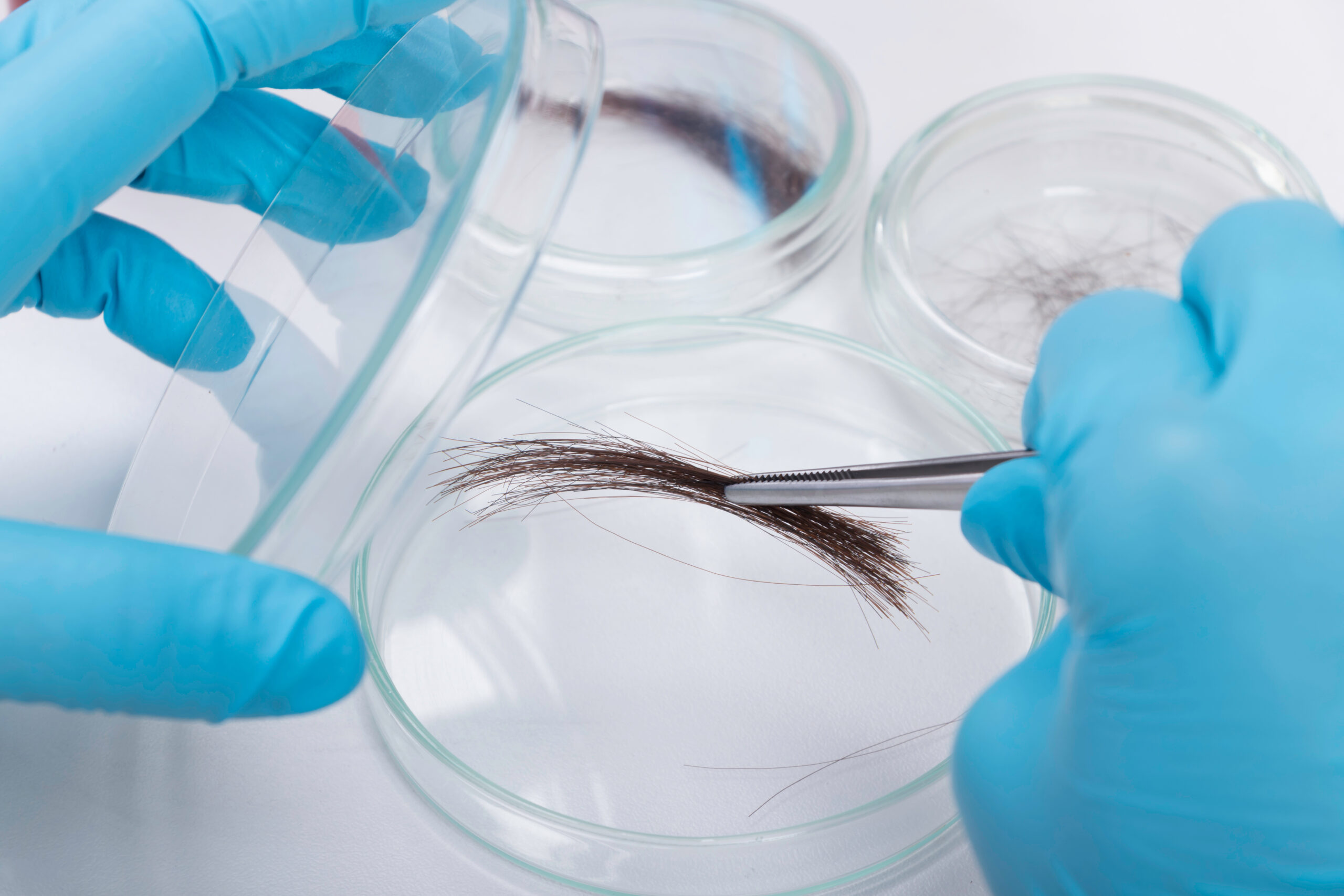
Hair Testing (EtG)
For EtG testing hair provides a window of detection of up to 90 days. Unlike drug metabolites, the detection period for EtG in hair is limited to 90 days regardless of where the hair is collected (scalp or body).
Pros: Longer window of detection than breath, saliva or urine. More difficult to cheat than urine.
Cons: More expensive than urine or saliva, accuracy affected by certain hair treatments such as coloration and bleaching. May seem more invasive if body hair is taken because scalp hair was not sufficient. Will not detect very recent use of alcohol due to the 7 – 10 days required for metabolites to be deposited into the hair that is collected (NW Testing recommends that a urine sample be tested at the same time to bridge this gap of time).
Nail Testing (EtG)
For EtG testing both fingernails and toenails provide a window of detection for up to 90 days.
Pros: Longer detection windows, cannot be adulterated/cheated.
Cons: Lack of sufficient nail length/quantity prevents specimen collection, nail treatments such as paint and gel must be professionally removed before collection, cannot be done if overlays have been placed onto nails. Will not detect very recent use of alcohol due to the 7 – 10 days required for metabolites to be deposited into the nails that are collected. (NW Testing recommends that a urine sample be tested at the same time to bridge this gap of time).


PEth (phosphatidylethanol) Testing
Following ingestion of ethanol, a direct biomarker called phosphatidylethanol, or PEth—is deposited into the outer layer of the red blood cells where it remains for up to 3 weeks. This test requires blood, which can be collected using venous blood from the arm or from the tip of a finger using a lancet.
Pros: Superior for abstinence testing, cannot be adulterated or cheated, provides longer window of detection than breath or urine, requires less privacy, no risk of false positives.
Cons: Risk of insufficient specimen if collector improperly trained, more expensive than traditional breath or urine screens.
Ready to order a test?
Fill out the corresponding form to request a test today.

